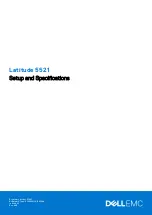
15
TRANSMISSION CIRCUIT 03
Terminal
No.
Terminal
Name
Function
Input/
Output
7
LKY
Linear amplifier control output
• The output logic during transmission can be configured using “ Keying Logic ” (16-
14) of the linear amplifier menu.
“Active High” : Outputs DC 12 V during transmission. The maximum output current is
100 mA.
“Active Low” : Switches to the “L” level (GND and short) during transmission. When
an external bias is applied while receiving is in progress, the signal switches to the “H”
level. Voltage and current not higher than DC 50 V and 100 mA respectively can be
controlled.
O
The TS-890S linear amplifier control relay functions on transmission if “Internal Relay Control” is enabled in the Linear
Amplifier Menu.
The linear amplifier control relay assumes that the TL-922 (discontinued) is standing by and can be connected as-is to
the TL-922. For a linear amplifier that stands by with a voltage application or a short-circuit to ground, disable the relay
control and make it stand by using the
LKY
terminal as described later.
When transmission starts while the
LKY
terminal is set to “Active High”, the transistor switch is turned On as shown in
the illustration and 12 V is diverted (100 mA or less). Active High indicates that the logic is high while the circuit is active.
After connecting a linear amplifier that switches the transmission operation upon detecting a voltage output, set the
LKY
terminal to “Active High”.
When transmission starts while “Active Low” has been configured for the
LKY
terminal, the FET switch is turned On as
shown in the illustration and short-circuits to ground. Active Low indicates that the logic is low while the circuit is active.
The linear amplifier type that can be connected is one that switches to the transmit state while the signal pulled up by the
linear amplifier is being short-circuited to ground. When such a linear amplifier is connected, configure “Active Low” for
the LKY terminal. However, the amount of withstand voltage and current are not large (DC 50 V or less, 100 mA or less),
thus it is not possible to drive a relay in this circuit or connect those which are activated with high voltage, such as some
of the evacuated-tube type linear amplifiers (e.g., TL-922). In such a case, use relay contacts alternatively.
Linear Amplifier Menu Settings
The Linear Amplifier Menu is used for configuring features related to the linear amplifier. The settings are configured
separately according to the band, including HF Band, 50 MHz Band and 70 MHz Band (European model only). Below
are descriptions of the configurable items.
● Linear Amplifier
Configuring to On enables the respective functions of the Linear Amplifier Menu, while the settings will not be applied
when Off is selected.
●
Keying Logic
For configuring the logic for linear amplifier transmission control.
Configuring to “Active High” o12V during transmission.
Configuring to “Active Low” short-circuits to GND during transmission.
●
Tx Delay Time
Extends the duration from when the transceiver is placed in the transmit state until radio waves are output and also the
duration until audio is output after returning to reception.
Large-sized relays generally tend to take time to start switching after energizing and have a long duration of time in
which chattering may take place at the moment of switching. If transmission starts before the contacts switch to the
transmission side, the SWR will increase until the switching finishes, thus the TS-890S activates a protection circuit to
momentarily reduce the transmit power. There is also another case where contact switching to the reception side after
reception starts may cause a strong clicking noise. Configuring Tx Delay Time may help to prevent such problems.
















































